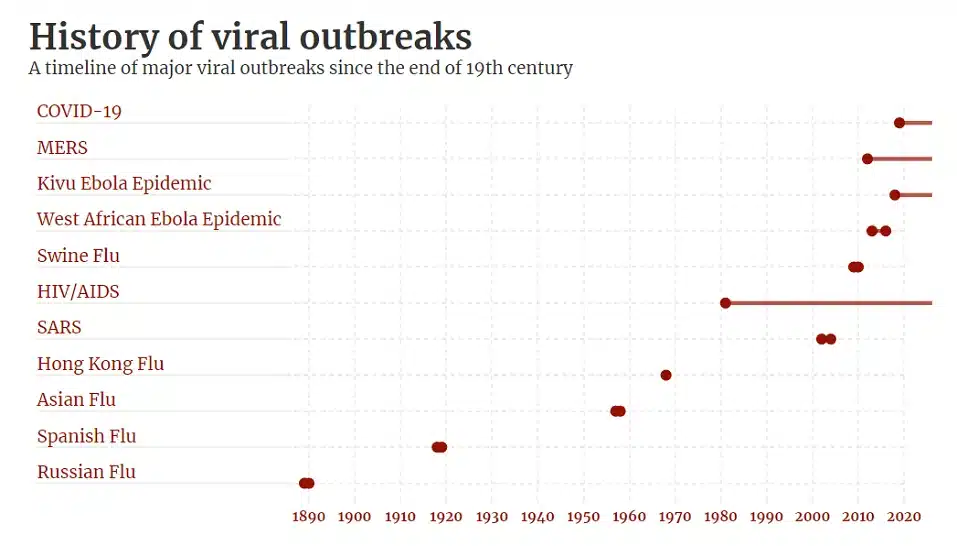The world has endured multiple viral outbreaks that have cost more human lives than the third iteration of the coronavirus.
While COVID-19 is unprecedented, it is not the first pandemic and is not likely to be the last. The world has endured multiple viral outbreaks that have cost more human lives than the third iteration of the coronavirus.
The last great pandemic of the 19th century, the ‘Russian Flu’, claimed the lives of at least a million people worldwide. While the true source of the outbreak is unknown, retrospective analyses have conjectured that the outbreak was caused either by an influenza virus (H2N2 or H3N8), or a human coronavirus (HCoV-OC43).
In 1918, the ‘Spanish Flu’ – caused by an influenza virus of H1N1 type – killed around 50 million people in the span of a year, making it one of the worst pandemics in recent history. The virus killed more people in a year than a world war of four years! While the H1N1 virus has been synthesised and evaluated, the properties that made it so devastating are still not understood well.
In 1957, a new influenza A (H2N2) virus emerged in East Asia, triggering the ‘Asian Flu’. With an estimated death toll of 1.1 million, the virus continued to circulate until 1968, when it transformed via antigenic shift into subtype H3N2. This caused the 1968 pandemic, the ‘Hong Kong Flu’, which wiped off another million lives in less than a year. H3N2 remains in circulation today as a strain of the seasonal flu.
Perhaps one of the most persistent pandemics is the one that started in 1981, against which no vaccine or definitive cure has been found yet – HIV/AIDS. Estimates by UNAIDS suggest that by the end of 2018, the disease had infected nearly 75 million people and killed 32 million, registering a mammoth fatality rate of over 42 percent.
The turn of the millennium brought with it the first coronavirus pandemic – Severe Acute Respiratory Syndrome (SARS). Identified in China’s Guangdong province in November 2002, the virus went on to infect 2519 people over the next 19 months, killing 774 of them.
A much deadlier iteration of the coronavirus, the MERS-CoV, came around in 2012 and continues to infect people. The disease, MERS, has so far claimed the lives of 866 out of the 2519 infected people – a fatality rate of over 34 percent. Though one of the most fatal outbreaks has been of the Ebola virus disease. First described in 1976 near the Ebola River in what is now the Democratic Republic of Congo, the virus has emerged periodically, causing multiple major outbreaks. Two of the most severe ones have been the West African Ebola Epidemic and the Kivu Ebola Epidemic. The former claimed the lives of 11,323 of the 28646 infected between 2014 and 2016. Still raging, with a fatality rate of over 60 percent, the Kivu epidemic has so far killed 2271 people.
As we fight the current pandemic, it’s good to remember the lessons from the past. The onus is on the robustness of our healthcare systems to limit the damage to human lives and economies.

















